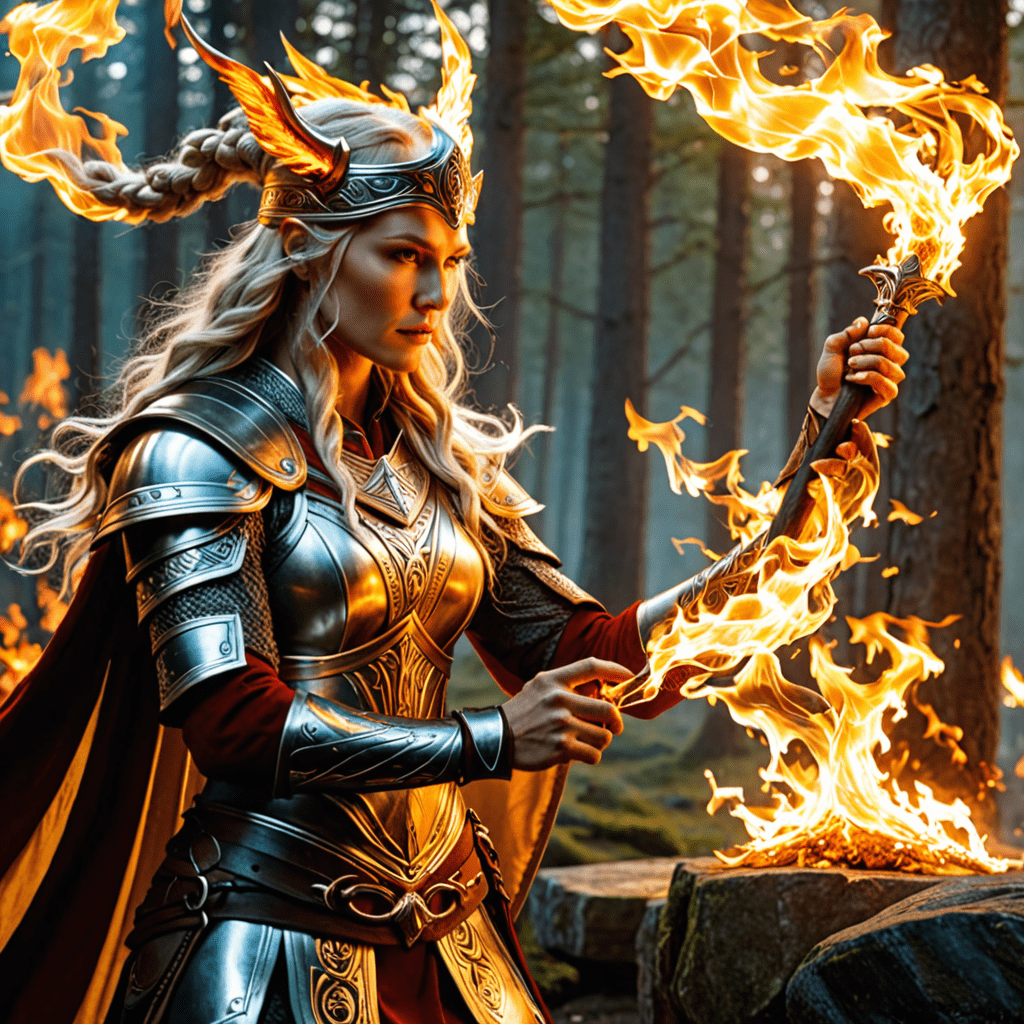The Symbolism of Light and Fire in Norse Mythology
In Norse mythology, the concepts of light and fire hold deep symbolic meanings that go beyond their physical characteristics. Let’s delve into the significance of light and fire in the rich tapestry of Norse legends and beliefs.
The Importance of Light
In Norse mythology, light is often associated with purity, enlightenment, and power. The most famous embodiment of light in Norse mythology is the god Baldur, known as the shining god of light and purity. Some tales depict him as the epitome of beauty and goodness, shining brighter than the sun itself.
Light is also closely linked to knowledge and wisdom in Norse mythology. The goddess Freyja, associated with love, fertility, and war, possesses the necklace Brísingamen, which is said to shimmer with a radiance that illuminates the darkest of realms.
Furthermore, the realm of Asgard, the home of the Aesir gods, is described as a place of light and splendor. The coveted apples of Idunn, which grant eternal youth to the gods, are often portrayed as radiant and light-bearing.
The Significance of Fire
Fire, in Norse mythology, represents transformation, passion, and destruction. One of the most revered deities associated with fire is Loki, the trickster god, who possesses the power to control and manipulate flames. His unpredictable and chaotic nature mirrors the dual aspects of fire – both creative and destructive.
The mighty giants of Norse mythology are often depicted as masters of fire, wielding its power in battles and rituals. Surt, the giant with a flaming sword guarding the realm of Muspelheim, embodies the fiery force of cosmic destruction during Ragnarok, the apocalyptic end of the world.
For the Vikings, fire held sacred importance in their religious ceremonies and beliefs. The tradition of cremation, where the deceased were laid to rest on funeral pyres, symbolized the passage of the soul from the earthly realm to the spiritual world, guided by the flames.
The Interplay between Light and Fire
In Norse mythology, light and fire often intertwine, representing a balance of forces in the cosmos. The rainbow Bifrost, connecting the realm of the gods to Midgard (the world of humans), is described as a bridge of shimmering light and fire, guarded by the god Heimdall.
Moreover, the legendary sword of the hero Sigurd, Gram, forged in dragon’s blood and imbued with the power of fire, embodies the fusion of light and fire as symbols of strength and courage.
Ultimately, the symbolism of light and fire in Norse mythology reflects the complex and dynamic nature of the Norse cosmos, where elemental forces shape both the physical and spiritual realms in intricate ways.
FAQ: The Symbolism of Light and Fire in Norse Mythology
What is the significance of light in Norse mythology?
Light symbolizes knowledge, divinity, and enlightenment in Norse mythology. It is often associated with gods like Baldr, who embodies purity and goodness.
How is fire portrayed in Norse mythology?
Fire represents various aspects in Norse mythology, such as destruction, warmth, protection, and renewal. The fire giant Surtr, for example, plays a pivotal role in the final battle of Ragnarok with his flames.
Which gods or beings are associated with light and fire in Norse mythology?
Goddess Sunna represents the sun and brings light to the world, while the god Freyr is linked to sunlight, fertility, and prosperity. The fire giants like Surtr and Muspelheim beings are connected to fire’s destructive power.





